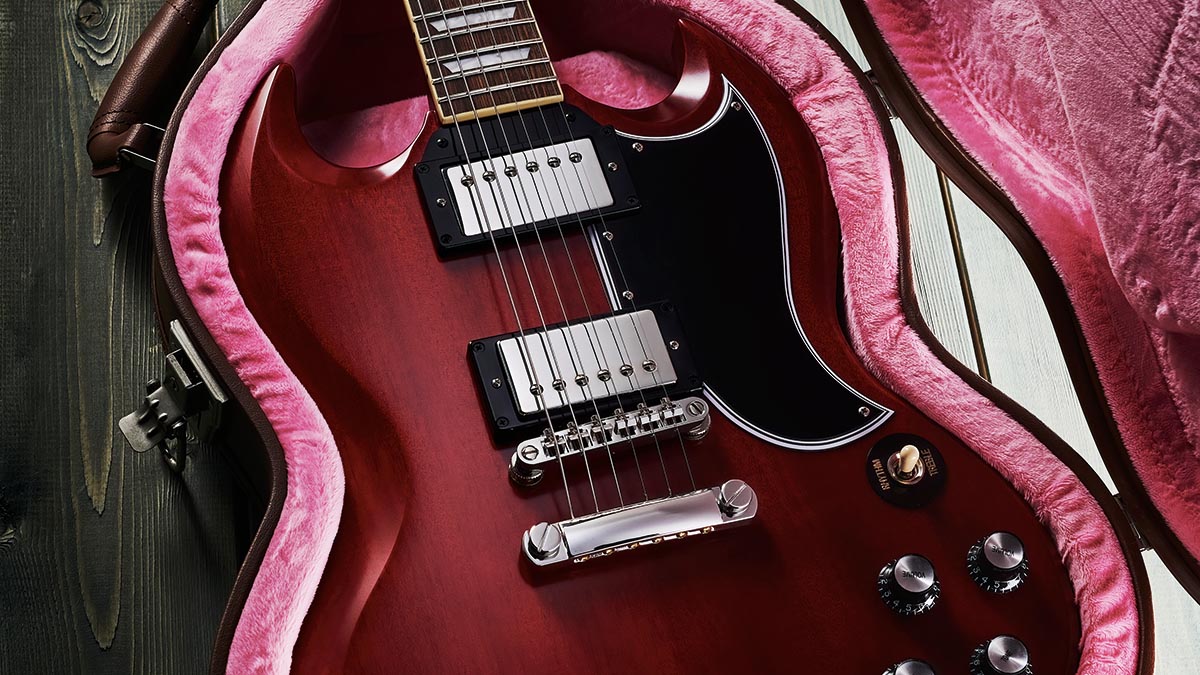MusicRadar Verdict
A convincing tribute to the original 1961 model with Gibson Burstbuckers bringing the tone and a neck that tempts adventure, the 1961 Les Paul SG Standard is another of these latter-day Inspired By Gibson Epiphone models that are just so hard to put down.
Pros
- +
Nails the looks, nails the tone.
- +
Burstbucker pickups.
- +
A versatile guitar.
- +
Hard-shell case included.
Cons
- -
Balance can be troubling for some players.
MusicRadar's got your back
Epiphone 1961 Les Paul SG Standard: What is it?
The Epiphone 1961 Les Paul SG Standard is one of the latest examples of the Gibson-owned company putting an electric guitar on the market that is more affordable than its US parent brand, with a different name on the headstock, and yet has an uncanny amount of the same design DNA.
It might have been made in China, with a typically detailed build as we have come to expect from 21st-century Epiphone, but there’s a lot of Gibson USA in the design. There’s an aspirational quality to it.
The product of a collaboration between the Gibson Custom Shop and Epiphone, the 1961 Les Paul SG Standard goes to great lengths to replicate Les Paul’s second most-famous electric guitar design.
It is the guitar that he didn’t think too much of, but the world’s guitar-playing public disagreed, making its double-horned body a staple of popular culture anyhow, and a serious rock ’n’ roll weapon in the right hands. And now, as then, it looks very cool.
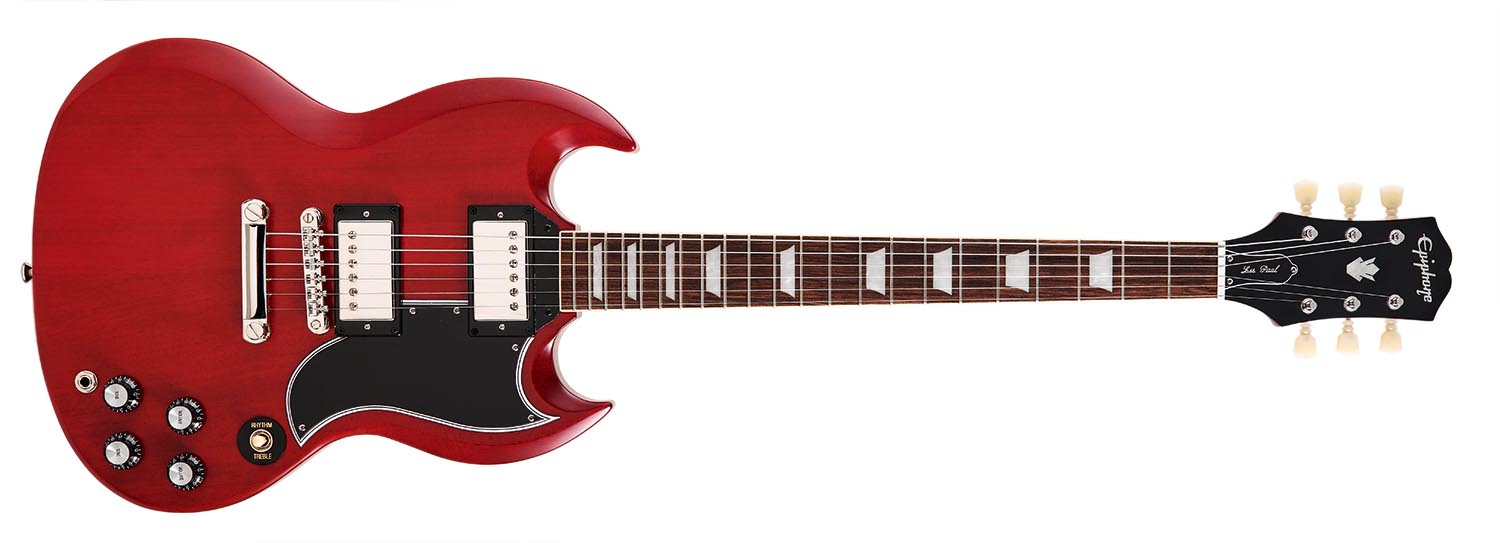
As the name suggests, this SG hews close to the 1961 version. Its solid two-piece mahogany body assumes the time-honoured double-cutaway profile and has a subtly aged cherry red finish on and Custom Shop Historic bevels to give it the air of a vintage piece. Though that finish is simply a little more matt than the high-gloss alternatives, and of course is poly not nitro. No matter, it looks good.
The neck is one-piece mahogany, fashioned into a very amendable medium C profile, and topped with a bound Indian laurel fingerboard inlaid with pearloid trapezoids. The subjectivity of fingerboard preferences is such that a critical consensus is hard to find but of all the rosewood substitutes Indian laurel, and particularly in this instance, is more than fit for purpose.
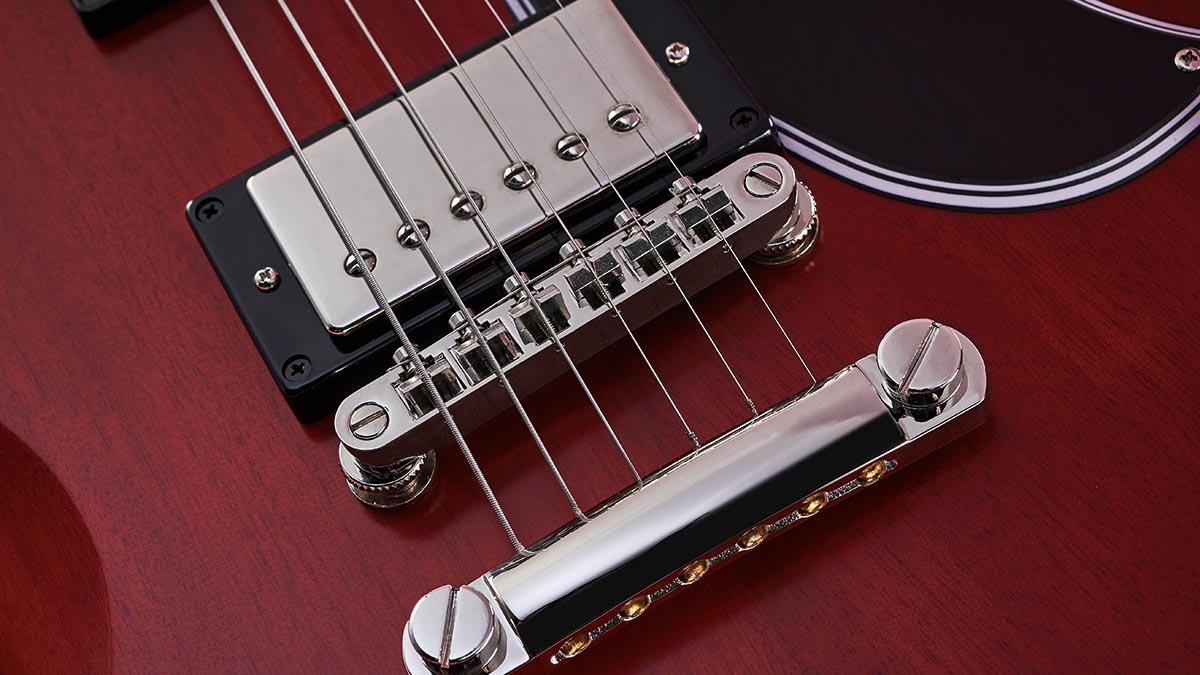
The big ticket items come by way of two Gibson USA Burstbucker pickups, which position this at the top-end of the Epiphone line. Only the Made In USA models, which to date comprise the Frontier and Texan acoustics, and a superlative Casino reissue, offer more luxury – or indeed command a higher price.
Want all the hottest music and gear news, reviews, deals, features and more, direct to your inbox? Sign up here.
These pickups are wired to a traditional two tone, two volume control setup with a three-way pickup selector switch, and in keeping with the high-end Epiphone house style we’ve got CTS pots, Mallory caps, and Switchcraft has provided the output jack and pickup toggle.
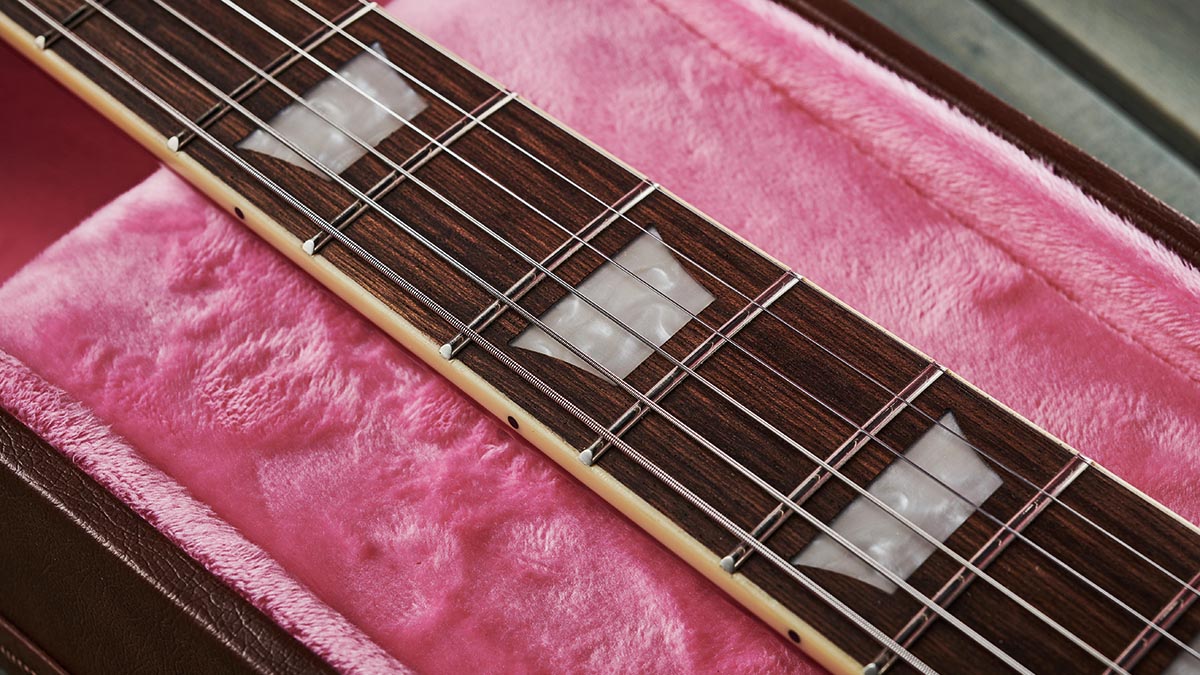
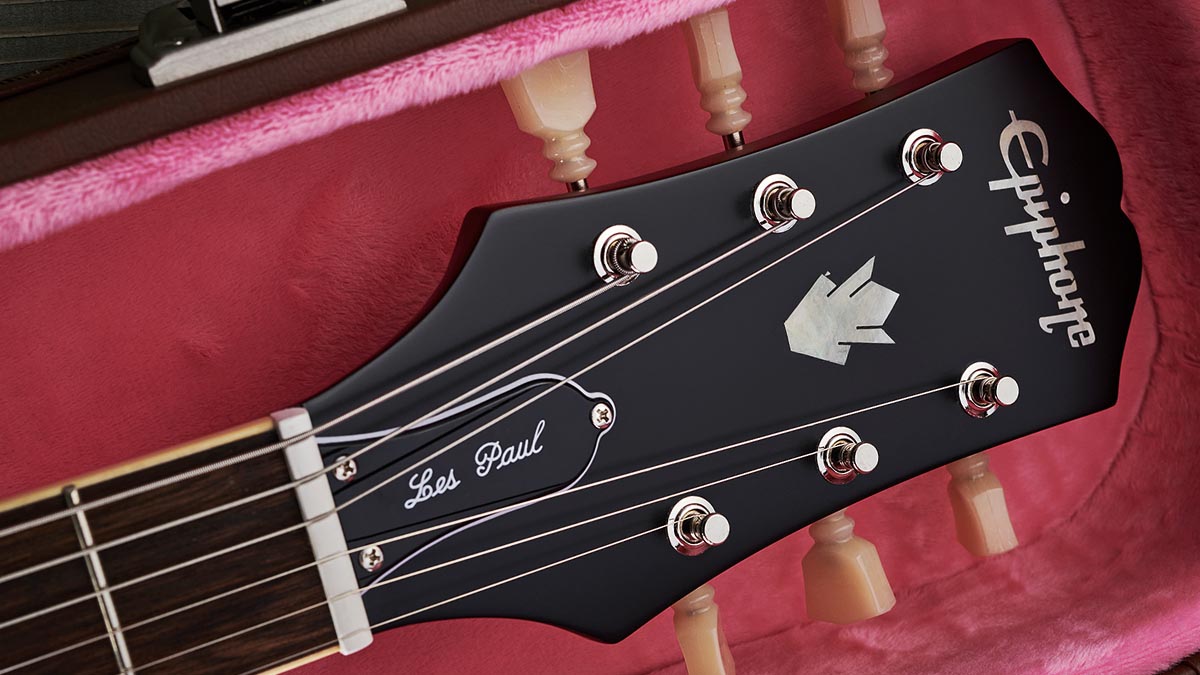
This attention to detail with regards to quality components extends to the Graph Tech nut, and ever-reliable Epiphone LockTone Tune-O-Matic bridge and matching tailpiece stop-bar.
The build and spec is enough to tell you that Epiphone is proud of this one, and so too is the fact that it ships in a hard-shell case. Always a good sign.
Epiphone 1961 Les Paul SG Standard: Performance and verdict
Those new to the SG might find it all neck but once the preliminary navigation is out of the way, and an equilibrium in terms of of balance is found, this is one of the instrument’s strongest suits. It opens up the whole fingerboard. This, allied to a thin plank body – we’re talking one-and-a-quarter inch thick – that is both ergonomic and allows the SG to weigh in under the 7lb mark makes for a very playable instrument.
It is little wonder that Angus Young gravitated towards one, nor that his stage act should be so kinetic. The SG makes this possible. This Epiphone version is very tactile. The neck ever-so-gently tapered, speedy without lacking substance. The fretwork is immaculate.
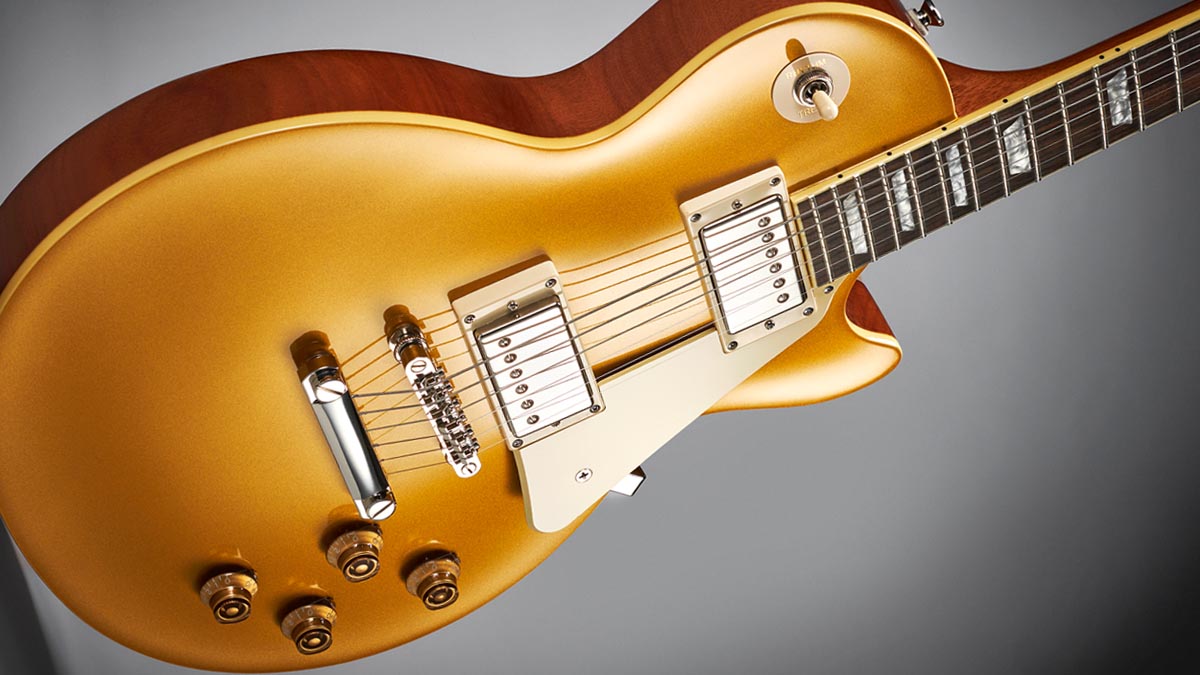
• Epiphone 50s Les Paul Standard
Epiphone gets the details right on this 50s Les Paul Standard. The tones sound authentically vintage. The feel and weight is right. And all this at a price that is impossible to argue with.
• Epiphone Joe Bonamassa 'Lazarus' 1959 Les Paul Standard
A worthy production line replica of a storied ’59 Les Paul Standard, Lazarus is exactly what you would expect from Epiphone and a vintage guitar connoisseur; it’s all vibe and then some.
What can feel slight when shouldered after playing Les Paul nonetheless feels stable in all the right ways – the vintage-style Epiphone Deluxe tuners are fashioned after Klusons and keep things in order, the LockTone tune-o-matic is a well-engineered and easily adjusted unit too.
Your finish options for this ’61 SG include the Aged Sixties Cherry we have in for review, and Aged Classic White. Both feature the aesthetically pleasing long pickguard, the open-book style headstock with pineapple inlay and Les Paul’s name returns to the truss rod plate cover.
Tone-wise, the SG’s voice can be pressed into the services of all kinds of styles on the blues-rock continuum. It’s not quite as stately as a Les Paul but has plenty of midrange character and detail, whether playing clean, on the edge of breakup or through a throttled tube combo, and while we often talk about how versatile the Les Paul is with the tone and volume controls it places at our disposal, and the same is true here.
Gibson USA pickups on a quality build allows the SG to perform that trick we ask of all high-end Epiphones: make us ask serious questions of whether it is worth ponying up for the Gibson equivalent. But maybe that is a false choice, because when Epiphone and Gibson collaborate on guitars such as this, it doesn’t feel like there has been any compromise along the way in what is a top-quality and super-fun SG, just so long as the balance works for you.
MusicRadar verdict: A convincing tribute to the original 1961 model with Gibson Burstbuckers bringing the tone and a neck that tempts adventure, the 1961 Les Paul SG Standard is another of these latter-day Inspired By Gibson Epiphone models that are just so hard to put down.
Epiphone 1961 Les Paul SG Standard: The web says
"At the risk of sounding like the record’s stuck, Epiphone has nailed it again. No, it’s not a nitro finish; yes, we’re bemused at those visually awkward pickup surrounds; and, of course, it exhibits the playing compromises and advantages of any other SG. But it represents phenomenal value, plays extremely well and stands up sonically to a pair of Gibsons that together outrank it a dozen-fold, price-wise."
Guitarist
Epiphone 1961 Les Paul SG Standard: Hands-on demos
Epiphone
Guitarist
The Trogly's Guitar Show
Andertons
PMTVUK
Epiphone 1961 Les Paul SG Standard: Specifications
- ORIGIN: China
- TYPE: Double-cutaway, solidbody electric
- BODY: Solid mahogany (two-piece)
- NECK: Mahogany, ‘medium C’ profile, glued-in
- SCALE LENGTH: 628mm (24.75”)
- NUT/WIDTH: Graph Tech Tusq/43mm
- FINGERBOARD: Bound Indian laurel, pearloid trapezoid inlays, 305mm (12”) radius
- FRETS: 22, medium jumbo
- HARDWARE: Epiphone LockTone tune-o-matic bridge and stud tailpiece, Kluson-style vintage tuners – nickel plated
- STRING SPACING, BRIDGE: 52mm
- ELECTRICS: Gibson Burstbucker 2 (neck) and Burstbucker 3 (bridge), 3-way toggle pickup selector, 2x volumes, 2x tones (CTS pots/Mallory capacitors)
- WEIGHT (kg/lb): 3.61/6.75
- OPTIONS: No
- LEFT-HANDERS: No
- FINISH: Aged Sixties Cherry (as reviewed), Aged Classic White – Aged Gloss
- CONTACT: Epiphone
MusicRadar is the number one website for music-makers of all kinds, be they guitarists, drummers, keyboard players, DJs or producers...
- GEAR: We help musicians find the best gear with top-ranking gear round-ups and high-quality, authoritative reviews by a wide team of highly experienced experts.
- TIPS: We also provide tuition, from bite-sized tips to advanced work-outs and guidance from recognised musicians and stars.
- STARS: We talk to musicians and stars about their creative processes, and the nuts and bolts of their gear and technique. We give fans an insight into the craft of music-making that no other music website can.
